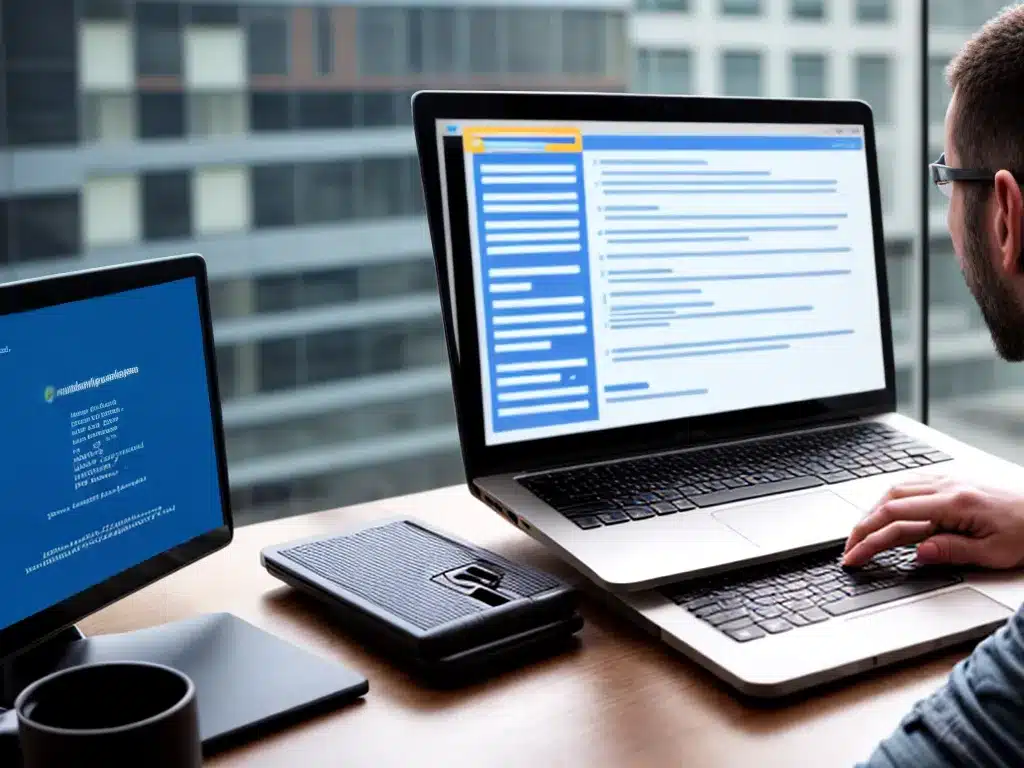
Data Security Considerations For Remote Employees
Introduction
As more companies adopt remote and hybrid work policies, securing employee data and devices outside of the office has become a top priority. There are several factors to consider when implementing data security for a distributed workforce. In this article, I will provide an in-depth look at the key data security challenges companies face with remote employees and best practices to mitigate risks.
Securing Devices
With employees working from personal devices outside the corporate network, device security is paramount. Here are some best practices:
-
Require encryption. Full disk encryption should be enabled on all devices storing sensitive data. This protects data if a device is lost or stolen.
-
Use VPNs. Employees should connect to corporate networks and resources using a virtual private network (VPN). This encrypts internet traffic and obscures device IP addresses.
-
Install endpoint security software. Antivirus, anti-malware, and firewall software help detect and prevent threats and unauthorized access on devices.
-
Enable remote wipe. Mobile device management (MDM) software allows IT admins to fully wipe managed devices remotely in case of loss or termination.
-
Require strong passwords. Employees should use strong, unique passwords and multi-factor authentication (MFA) where possible to prevent unauthorized access.
-
Keep devices updated. Regular software, operating system, and security patches are essential to fix vulnerabilities.
Securing Company Data
Beyond just securing devices, steps must be taken to protect sensitive company data accessed by remote employees:
-
Classify data. Know what data is confidential through data classification and label it appropriately. This allows proper security policies to be applied.
-
Limit data access. Restrict access to sensitive data to only those employees who need it for their role through access controls and permissions.
-
Use cloud security tools. Cloud access security brokers, data loss prevention, and cloud encryption provide visibility and control over cloud data.
-
Train employees. Educate employees on data handling policies and best practices through security awareness training. Stress the importance of data protection.
-
Enable data tracking. Solutions like rights management and cloud access security brokers allow tracking of data downloads, transfers, and sharing.
-
Secure collaboration tools. Apply appropriate security settings and controls on remote collaboration platforms like video conferencing, chat, and file sharing tools.
Policies and Protocols
Policies and protocols provide a framework for securing data and devices for remote work:
-
Create remote work policies. Document allowed devices, proper access methods, data handling, technical controls, and end user responsibilities.
-
Require security agreements. Employees should sign agreements acknowledging security policies and consenting to measures like monitoring.
-
Establish protocols. Standard protocols for reporting issues, obtaining access, handling data, wiping devices, securing networks, and other aspects ensure consistent data protection.
-
Conduct risk assessments. Regular risk assessments identify vulnerabilities to address like unsecured home networks, outdated software, misconfigured cloud storage, etc.
-
Test incident response plans. Practice responding to potential incidents like data leaks, lost devices, or account compromises. Define escalation processes and backup methods.
Monitoring and Auditing
Ongoing monitoring and auditing verifies security controls are working effectively:
-
Log activity. Capture detailed activity logs of remote employees accessing applications, networks, and data. Review for anomalies.
-
Monitor endpoints. Use an endpoint detection and response (EDR) system to monitor endpoints and identify suspicious activities requiring investigation.
-
Audit devices and networks. Conduct remote scans and audits of devices and home/public networks employees connect from to identify insecure configurations or vulnerabilities.
-
Review permissions and access. Periodically review employee permissions and access to ensure only authorized data is available based on current roles.
-
Test security controls. Ethical hackers can be leveraged to attempt penetration testing of devices and networks to validate effectiveness of security controls.
-
Inspect data sharing. Monitor collaboration platforms and cloud apps used for remote data sharing to ensure sensitive data is not exposed to unauthorized parties.
Conclusion
Securing data and devices for remote employees requires a multilayered approach spanning people, processes, and technology. By implementing strong device protections, access controls, policies, user training, and continuous monitoring, companies can keep data secure and maintain productivity for distributed teams. As remote work evolves, data security must remain a key focus area.












